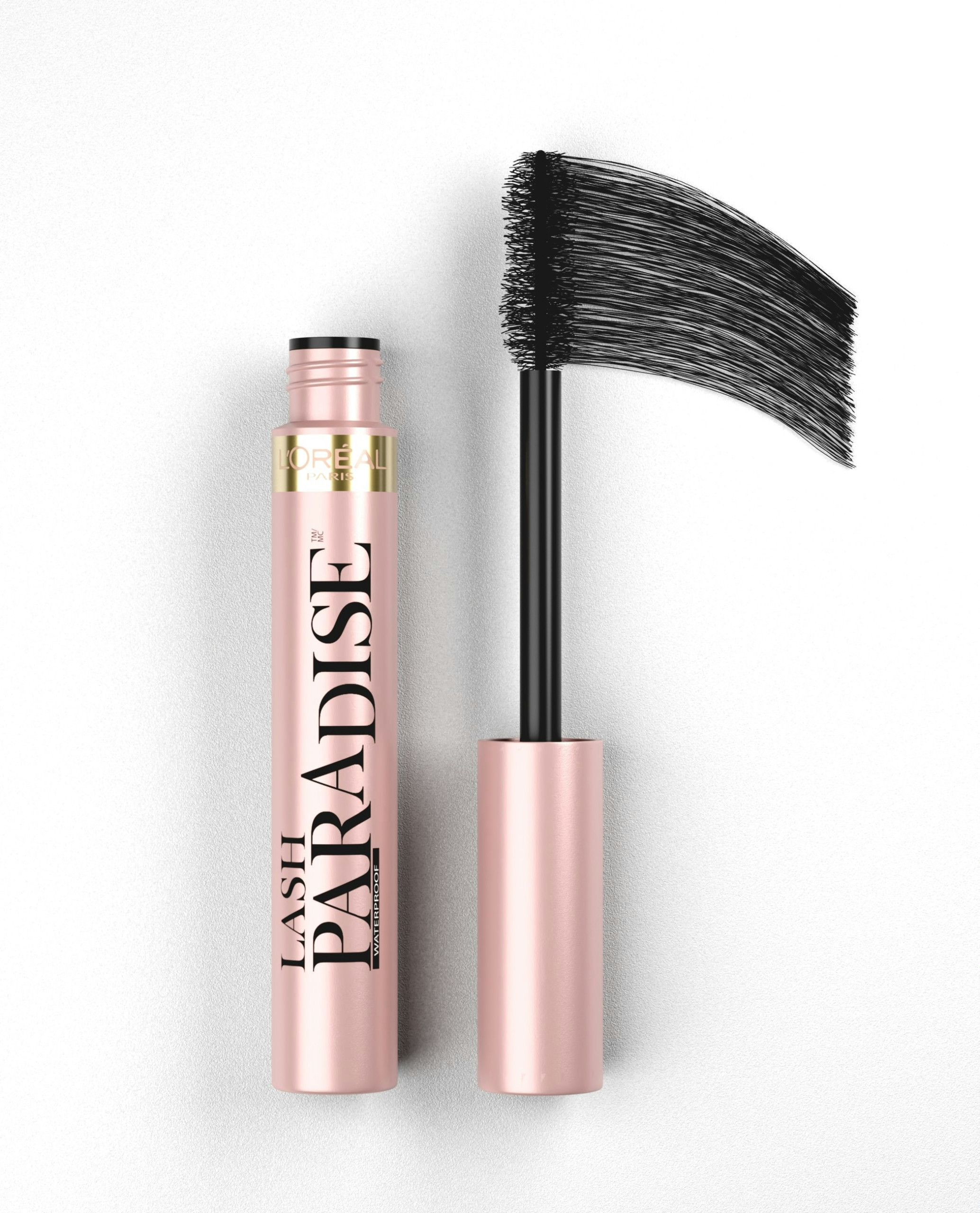If you’re a DIY enthusiast looking to take your electric die grinder to the next level, we’ve got some exciting news for you. In this article, we’ll be exploring a wide range of modifications and enhancements you can make to your electric die grinder to improve its performance and versatility. Whether you’re looking to increase the speed, enhance control, or add unique features, we’ve got you covered. So grab your tools and get ready to unleash the full potential of your electric die grinder with these DIY modifications and enhancements.
1. Choosing the Right Electric Die Grinder
Consider the Power and Speed
When choosing an electric die grinder, one of the first factors to consider is the power and speed it offers. The power of the grinder is typically measured in terms of its motor’s amp rating. Higher amp ratings generally indicate more power, allowing for quicker and more efficient grinding. Additionally, pay attention to the grinder’s RPM (revolutions per minute) rating, which determines how fast the grinding wheel or bit spins. Higher RPMs are ideal for tasks that require quick material removal, while lower RPMs may be better suited for precision work.
Evaluate the Ergonomics and Design
Another important aspect to consider is the ergonomics and design of the grinder. Look for a grinder that feels comfortable in your hand and has a well-balanced weight distribution. This will minimize fatigue and make prolonged use more enjoyable. Additionally, consider the placement and accessibility of the grinder’s switches and controls. A well-designed grinder will have easily accessible controls that allow for convenient operation.
Look for Versatility and Compatibility
A versatile electric die grinder can handle a wide range of tasks, so it’s important to choose one that offers compatibility with different types of grinding bits. Look for a grinder that has a variety of collet sizes, allowing you to use different sized bits and accessories. This compatibility will provide you with the flexibility to tackle various projects with a single tool.
Check for Safety Features
Lastly, prioritize safety when choosing an electric die grinder. Look for models that include features like a locking switch or a two-stage power button to prevent accidental operation. It’s also beneficial to choose a grinder that has a built-in safety guard to protect you from sparks or debris during use. Ultimately, investing in a grinder with robust safety features will ensure a secure and worry-free grinding experience.
2. Upgrading the Grinding Bits
Understanding the Different Types of Grinding Bits
Before upgrading the grinding bits of your electric die grinder, it’s important to understand the different types available. Some common grinding bits include grinding wheels, flap wheels, carbide burrs, and diamond bits. Each type of grinding bit serves a specific purpose, whether it be material removal, polishing, or shaping. Familiarize yourself with the various grinding bits and their applications to select the most appropriate one for your intended task.
Selecting the Appropriate Grinding Bit for the Task
Once you’re familiar with the different types of grinding bits, it’s crucial to select the most suitable one for the task at hand. Consider the material you’re working with, the desired result, and the level of precision required. For example, if you’re working with metal, a carbide burr may be an excellent choice for precise shaping and deburring. On the other hand, a grinding wheel with a coarse grit may be more suitable for quick material removal.
Replacing or Sharpening Worn-out Grinding Bits
Over time, grinding bits can become worn-out or dull, reducing their effectiveness. When this happens, it’s important to replace or sharpen them to maintain optimal performance. Replacement grinding bits can be purchased for most standard die grinders, ensuring easy and hassle-free replacements. If you prefer to sharpen your bits, invest in a diamond sharpening stone or a grinding wheel dresser to restore their sharpness.
Experimenting with Specialty Grinding Bits
For those looking to expand their grinding capabilities, specialty grinding bits are worth exploring. These bits are designed for specific tasks and may include features like different grits, shapes, or materials. For instance, a cylindrical grinding bit with a fine grit may be ideal for intricate and detailed work. By experimenting with specialty grinding bits, you can take your projects to the next level and achieve professional results.

3. Enhancing the Grip and Control
Adding an Auxiliary Handle for Stability
To enhance the grip and control of your electric die grinder, consider adding an auxiliary handle. An auxiliary handle provides additional stability and allows you to exert more control over the grinder. It can be particularly useful when working on demanding or prolonged tasks that require steady handling. Look for die grinders that come with the option to add an auxiliary handle or consider retrofitting your existing grinder with a compatible handle.
Using Anti-Vibration Accessories
Reducing the vibration generated by your electric die grinder can greatly improve your comfort and control. Look for anti-vibration accessories such as padded gloves, anti-vibration mounts, or specialized grip wraps. These accessories absorb and dampen the vibrations, minimizing hand fatigue and allowing for better precision. Incorporating anti-vibration accessories into your grinding routine will make every task more enjoyable and less tiring.
Applying Grip Enhancers for Comfort
If you find that your electric die grinder handle lacks sufficient grip, you can enhance it with grip-enhancing products. These products, like rubber grip covers or adhesive grip tape, provide a non-slip surface that improves handling and reduces the risk of accidental slips. Applying grip enhancers is a simple and cost-effective way to personalize your grinder and ensure maximum comfort during use.
Customizing the Handle Shape for Better Control
Some electric die grinders allow for customization of the handle shape to suit your specific grip preferences. This feature is particularly useful for those with unique hand sizes or ergonomic needs. By adjusting the handle shape, you can achieve a more natural and comfortable grip, enhancing overall control and reducing strain. Check the specifications of your grinder or explore aftermarket handle customization options to find the best fit for your needs.
4. Improving Dust Extraction
Understanding the Importance of Dust Extraction
Dust extraction is a crucial aspect of using an electric die grinder, especially when working with materials that produce hazardous or irritating dust. Breathing in this dust can lead to health issues, so it’s essential to invest in dust extraction solutions. Effective dust extraction not only protects your health but also keeps your work area clean and improves overall visibility.
Installing a Dust Shroud or Guard
One of the most common and effective ways to improve dust extraction is by installing a dust shroud or guard. These components attach to the grinder and create a seal around the grinding area, capturing the dust as it is produced. Dust shrouds or guards are available in various sizes to accommodate different grinder models and can often be easily installed without requiring any modifications.
Using Vacuum Attachments for Efficient Dust Collection
To further enhance dust extraction, consider utilizing vacuum attachments specifically designed for electric die grinders. These attachments connect the grinder to a vacuum cleaner, creating a powerful suction that effectively collects dust particles before they can become airborne. Vacuum attachments are particularly useful when working on large projects or in environments where a high level of dust control is necessary.
Creating DIY Dust Extraction Solutions
For those looking for a more affordable or customized solution, creating a DIY dust extraction system is an option. This could involve constructing a custom enclosure with a dust collection port or repurposing a small shop vacuum with the appropriate attachments. While these DIY solutions may require more effort, they can be highly effective and tailored to your specific needs.

5. Modifying the Power Source
Extending the Power Cord for Better Mobility
If the power cord of your electric die grinder limits your mobility, consider extending it to cover a larger workspace. This can be achieved by using extension cords specifically designed for power tools. However, it’s important to ensure that the extension cord is of the appropriate gauge to handle the grinder’s power requirements. Using an extension cord that is too thin can result in reduced performance or even damage to the grinder.
Adding a Cordless Conversion Kit
For ultimate mobility and flexibility, consider adding a cordless conversion kit to your electric die grinder. These kits typically include a lithium-ion battery pack, charger, and a converter that allows the grinder to operate wirelessly. While this modification may require some technical expertise, it eliminates the need for a power cord and allows you to easily move around your workspace without any restrictions.
Exploring Alternative Power Options
In addition to cordless conversions, some electric die grinders can be modified to run on alternative power sources. For example, you may be able to connect the grinder to a 12V car battery or even a portable power bank. These alternative power options can be advantageous when working in remote locations or situations where access to electrical outlets is limited.
Enhancing Power Delivery with Adjustable Voltage
For individuals with more advanced technical skills, modifying the power delivery of an electric die grinder can offer additional control and performance. Installing a variable voltage regulator or controller allows you to adjust the voltage supplied to the grinder’s motor. This modification can improve torque, speed, and overall performance, providing greater versatility for a variety of grinding tasks.
6. Fine-tuning Speed and Torque
Exploring Variable Speed Control Options
To fine-tune the speed of your electric die grinder, explore variable speed control options. Some grinders come with adjustable speed settings, allowing you to increase or decrease the RPM as needed. Variable speed control is particularly beneficial when working with different materials or when specific precision is required. By adjusting the speed, you can achieve optimal results and prevent overheating or damaging the workpiece.
Installing Speed Regulators or Controllers
For grinders that do not have built-in variable speed control, you can install external speed regulators or controllers. These devices connect between the power source and the grinder, providing the ability to adjust the speed. Speed regulators or controllers are available in both manual and electronic versions, with electronic options offering more precise control. Installing a speed regulator or controller is an excellent way to tailor the performance of your grinder to specific tasks.
Modifying the Gear Ratio for Increased Torque
Modifying the gear ratio of your electric die grinder is a more advanced modification but can significantly enhance torque. By increasing the gear ratio, you ensure that more power is transmitted to the grinding bit, resulting in greater torque. This modification is particularly valuable when working with tough materials or when more aggressive grinding is required. Consult a professional or refer to online resources for detailed instructions on how to modify the gear ratio of your specific grinder model.
Customizing Speed and Torque Profiles
For individuals with a thorough understanding of electronics and motor control, customizing the speed and torque profiles of an electric die grinder is a possibility. This involves programming or modifying the grinder’s electronic control system to achieve specific performance characteristics. Customizing speed and torque profiles allows for precise control and optimization, catering to individual grinding preferences and project requirements.

7. Building Custom Jigs and Fixtures
Understanding the Application of Jigs and Fixtures
Jigs and fixtures are valuable tools in improving the accuracy and precision of grinding tasks. They provide a guide or support system for the workpiece, ensuring consistent results. By understanding the application and benefits of jigs and fixtures, you can leverage them to achieve professional-level grinding.
Designing and Building Jigs for Precise Grinding
Designing and building custom jigs specific to your project requirements can greatly enhance accuracy and precision. A jig can be as simple as a wooden block with guide rails or as complex as a multi-component system. Consider the shape, size, and material of the workpiece when designing the jig to ensure optimal support and stability. By investing time into designing and building jigs, you’ll be able to achieve consistent and precise results with every grinding task.
Creating Templates and Guides for Repetitive Tasks
For tasks that require repetitive grinding, creating templates and guides is a time-saving solution. Templates can be made from sturdy materials such as acrylic or metal and are used as a reference to guide the grinder along a specific path. Guides, on the other hand, can be attached or clamped onto the workpiece to ensure uniform removal of material. By utilizing templates and guides, you can streamline the grinding process and achieve consistent results, even with high volumes of repetitive work.
Utilizing Magnetic Fixtures for Easy Positioning
Magnetic fixtures offer a convenient and easy way to position and hold the workpiece securely during grinding. These fixtures feature built-in magnets that attract and hold ferrous materials in place, allowing for precise positioning and stability. Utilizing magnetic fixtures simplifies the setup process and ensures that the workpiece remains fixed, eliminating the need for additional clamps or supports.
8. Implementing Safety Upgrades
Adding Protective Guards or Shields
While many electric die grinders already come with built-in safety guards or shields, additional protective measures can be implemented. Consider adding supplementary guards or shields that provide enhanced protection against sparks, debris, or accidental contact with the grinding wheel. These accessories can be easily attached to the grinder and offer an additional layer of safety during operation.
Installing Electronic Safety Sensors
For individuals who prioritize safety, installing electronic safety sensors can add an extra level of protection. These sensors are designed to detect abnormalities in the grinding process, such as sudden speed changes or vibrations, and automatically shut off the grinder to prevent accidents. Electronic safety sensors are available in various models and can be retrofitted onto existing grinders or incorporated into new ones.
Utilizing Anti-Kickback Accessories
To minimize the risk of kickback, which occurs when the grinder grabs onto the workpiece and forcefully spins it back towards the operator, anti-kickback accessories can be employed. These accessories, such as clutch heads or anti-kickback devices, prevent the grinder from grabbing onto the workpiece and allow for safer grinding. When working with materials that have the potential for kickback, always use appropriate anti-kickback accessories to ensure operator safety.
Incorporating Automatic Shut-off Systems
Automatic shut-off systems offer an additional layer of safety by automatically turning off the grinder after a predetermined period of inactivity. These systems minimize the risk of accidents caused by leaving the grinder unattended or forgetting to power it off. Some grinders may already come equipped with automatic shut-off features, but if not, there are aftermarket options available that can be installed for added convenience and peace of mind.
9. Personalizing the Die Grinder
Applying Custom Paint or Decals
Personalizing your electric die grinder can be a fun way to make it truly yours. Applying custom paint or decals is a simple and effective method to add a personal touch. Choose a color scheme or design that reflects your personality or matches your workshop aesthetic. Make sure to use paint or decals that are heat-resistant and won’t interfere with the grinder’s functionality or safety features.
Adding Personalized Engravings
For a more permanent and sophisticated personalization option, consider adding personalized engravings to your die grinder. Engravings can be done using a rotary tool or laser etching, allowing you to add your name, initials, or any design of your choice. This customization not only adds a unique touch but also helps identify your grinder in shared workspaces.
Enhancing the Aesthetics with Accessories
There are various accessories available in the market that can enhance the aesthetics of your die grinder. Look for accessories such as decorative end caps, colored handle grips, or custom tool pouches that complement your personal style. These accessories are designed to add a touch of visual appeal and individuality to your grinder while maintaining its functionality.
Customizing the Handle Grip Colors
If you want to customize the appearance of your grinder while maintaining its original design, consider changing the handle grip colors. Some die grinders offer interchangeable handle grips in different colors, allowing you to swap them out to match your preferences or current project. This simple customization option gives you the flexibility to change the look of your grinder whenever desired.
10. Troubleshooting and Maintenance
Identifying and Resolving Common Issues
Even with the best die grinders, occasional issues or challenges may arise. It’s important to be familiar with common issues and their potential solutions to minimize downtime and ensure smooth operation. Some common die grinder issues include overheating, poor performance, or excessive vibration. By learning how to identify and troubleshoot these issues, you can resolve them efficiently and prevent further damage.
Performing Regular Cleaning and Lubrication
Routine cleaning and lubrication are vital for the longevity and optimal performance of your die grinder. Regularly remove debris and dust from the grinding area and internal components using a brush and compressed air. Additionally, lubricate the gears, bearings, and other moving parts with a suitable lubricant to reduce friction and prevent premature wear. Following a maintenance schedule will keep your die grinder in excellent shape for years to come.
Replacing Worn-out Parts
Over time, certain parts of your die grinder may become worn-out or damaged. It’s essential to replace these parts promptly to avoid compromising the functionality and safety of the tool. Common parts that may require replacement include grinding wheels, collets, brushes, or safety guards. Refer to the manufacturer’s instructions or consult the grinder’s documentation to identify the specific part numbers and order genuine replacements.
Adopting Preventive Maintenance Practices
To prolong the lifespan of your die grinder and prevent potential issues, it’s beneficial to adopt preventive maintenance practices. This includes regular cleaning and lubrication, as well as inspecting the grinder for signs of wear or damage. Additionally, storing the grinder in a dry and protected area when not in use helps prevent rust and corrosion. By incorporating preventive maintenance into your routine, you’ll ensure that your die grinder remains reliable and performs at its best.
In conclusion, DIY modifications and enhancements for electric die grinders offer an opportunity to tailor your tool to your specific needs and preferences. From choosing the right grinder and upgrading the grinding bits to enhancing grip and control, improving dust extraction, modifying the power source, fine-tuning speed and torque, building custom jigs and fixtures, implementing safety upgrades, personalizing the grinder, and practicing troubleshooting and maintenance, there are numerous options to explore. Whether you’re a professional craftsman or a DIY enthusiast, these modifications and enhancements will make your electric die grinder a versatile and efficient tool in your workshop arsenal.



